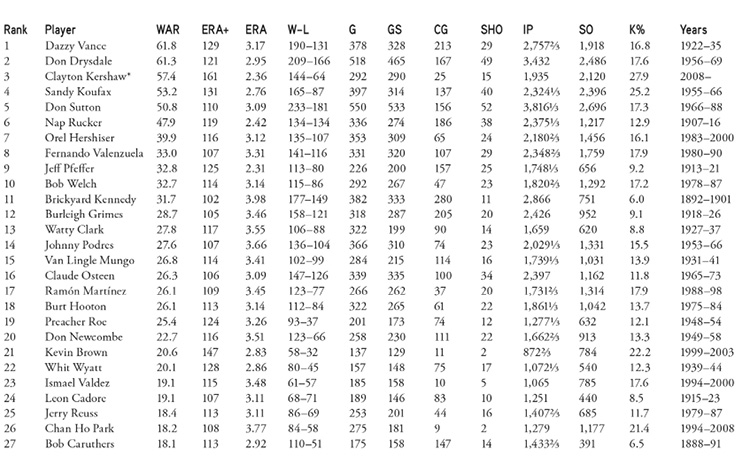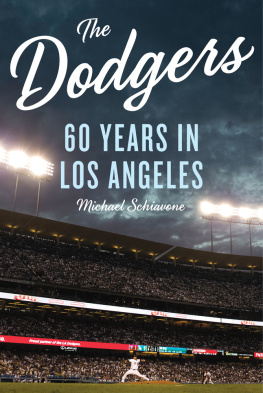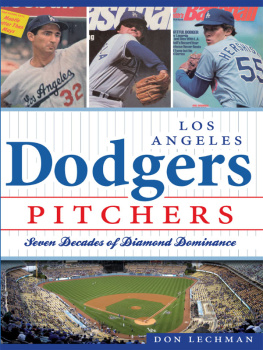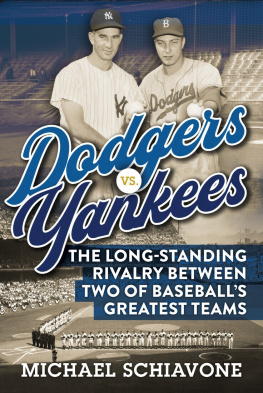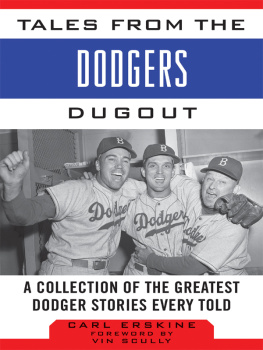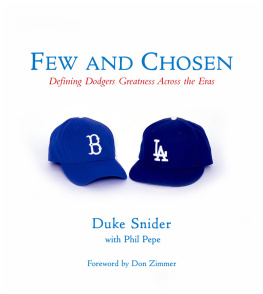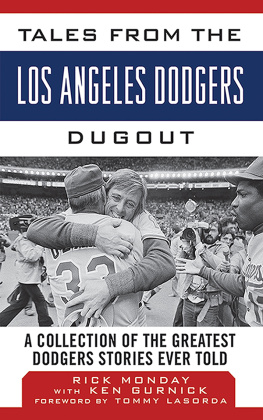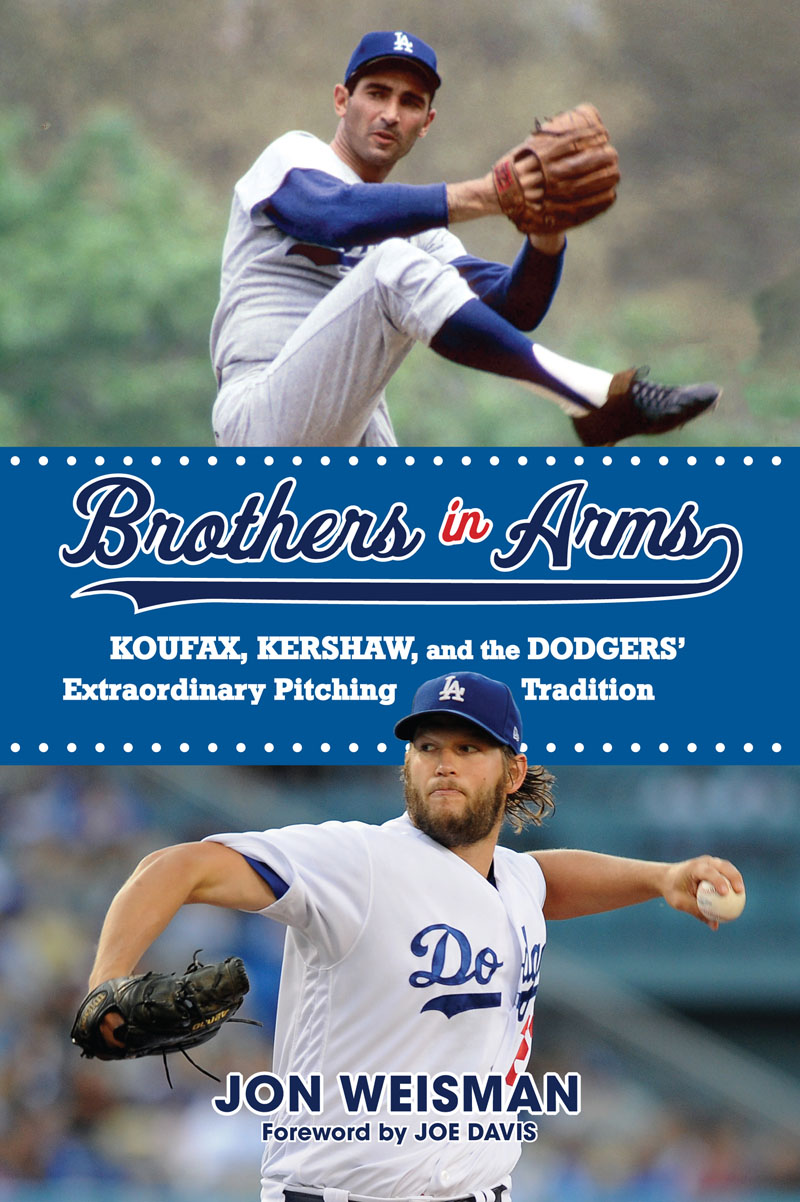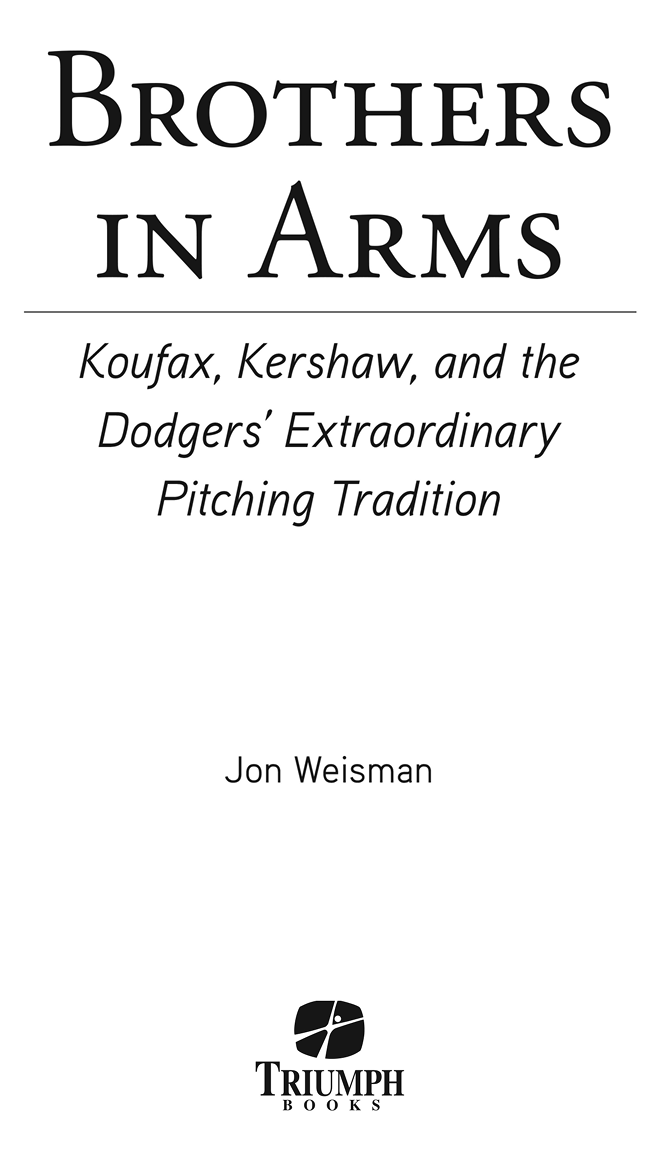
To Dashiell, Casey, Lilah, Dana, and all of my family. Ive written this book in part to honor special people, to lasso their memories and preserve them forever. I only wish I could do the same for you. It goes by too fast, but please know from this dedication how dedicated I am to you. You are everything that matters.
Contents
Foreword by Joe Davis
When I took the Dodgers TV job, I did so understanding how important the franchises history was to its identity. I knew I couldnt do the job justice without having an advanced degree in the names, the games, and the moments that define the Dodgers. But I wasnt around when the team was in Brooklyn. I didnt grow up in Los Angeles. The impossible happened three months before my first birthday. So I dived in.
What began as work quickly became a passion. I read everything Blue I could get my hands on. Lasorda led me to Alston, and together they led me to McGunnigle. Seager, I found, was a hop, skip, Russell, Wills, and Reese from World War II. The euphoria of 55 began to make sense when I learned about the tears of 51. (And 49. And 47. And 41. And) And those ever-present Koufax comparisons gave me a new appreciation for what Im watching every fifth day when Kershaw takes it.
Speaking of those two
There have been so many great books written about the Dodgers. But with the foundational role pitchers hold in this franchises glorious history, doesnt it seem like theres been an empty spot on the Dodger shelf that needed filling? With Brothers in Arms , Jon Weisman slides a must-have into that void. This book instantly becomes one that Ill always have handy while prepping for broadcasts, and one that I know Dodger fans and history buffs wont be able to put down.
I write this while sitting on the Dodgers charter plane, a row behind Hershiser and a few in front of Kershaw. Theyre connected in the same way Grimes and Roe and Drysdale and Sutton and Valenzuela are. Between these covers, Jon gives color and context to those links. The Dodgers men on the mound now have their own storybook, their own encyclopedia, their own definitive guide.
I hope you enjoy it as much as I do. Off we go.
Joe Davis is the play-by-play broadcast announcer for the Los Angeles Dodgers on SportsNet LA. He also broadcasts college football, college basketball, and Major League Baseball on Fox Sports.
Introduction
The first idea was to write a biography of a Dodger, a pitcher in particular. Don Newcombe or Fernando Valenzuela, Orel Hershiser or Clayton Kershaw.
The second idea was, why not do them all?
The Dodgers are the team of Jackie Robinson, of Vin Scully, of the Boys of Summer, and the improbable, impossible home run. They play in one of baseballs most idyllic ballparks, wearing one of its most iconic uniforms, and whether youre their fan or theyre your foe, they stand as a tentpole not only in baseball, but all of sports.
And yet, through the years, if anything defines one of baseballs flagship franchises on the field, its been the Dodgers ability to continually, almost relentlessly, produce greatness atop that humble rise of dirt in the middle of the diamond. The Dodger pitching tradition is like no other.
Its a pantheon filled with towering figures, any one of whom could be the defining pitcher for a franchise: Newcombe. Koufax. Drysdale. Sutton. Valenzuela. Hershiser. Kershaw.
In the deep supporting cast, youll find the troops that tie the tradition together: the Knights of the Round Mound. Preacher Roe, Carl Erskine, and Johnny Podres werent mere men of characterthey were characters, perfectly cast in the longest-running show on the Great Blue Way. Since World War II, when the Dodger pitching tradition tiptoed into life, decade after decade has costarred underrated pitchers who deserve the light of a better sun, from those harshly torched by singular moments, such as Ralph Branca, to steady aces lost in the shadow of flashier ones, like Claude Osteen or Burt Hooton. Their stories fascinate with their joy, their poignancy, even their agony.
The Dodger pitching tradition also hosts the origins of some of the most significant developments in baseball history. The Dodgers led baseball in diversifying the men on the mound by recruiting pitchers from untapped leagues, whether Negro, Mexican, Korean, or Japanese. They practically redefined the medical treatment of pitchers, most notably with Tommy John (and a leading assist from Dr. Frank Jobe) but also on several quiet but significant levels. The Dodgers even played important roles in the intersection of pitching and free agency, whether as antagonists to Andy Messersmith or deep divers into the enticing but dangerous waters for Kevin Brown and Zack Greinke.
The attention to scouting and development, the broad-based talent-hunting and high-end fine-tuning, was passed from the past to the present. Executives like Branch Rickey and Peter OMalley, managers like Walter Alston and Tommy Lasorda, coaches like Red Adams, Ron Perranoski, and Rick Honeycutt, men with generations of service, students who grew up to teach, honed and preserved the Dodger pitching tradition, to the benefit of Los Angeles in particular and baseball in general.
Like the sunsets and San Gabriel Mountains underpinning the skyline behind Dodger Stadium, like the Three Sisters gazing kindly over the left-field bullpen, pitching excellence now seems organic to Dodger life. And yet, we know pitching doesnt grow on trees (not even palm trees). The Dodger pitching tradition came not from nowhere, but from somewhere. In many ways, its an incredible journey, and in every way, a fascinating one.
Here is the history of that tradition, and the people upon whose shoulders it was built. Time to toe the rubber, stare in for the sign, and read on.
Quick Notes on Sourcing and Statistics
More than 25 interviews were conducted for Brothers in Arms. When quoted, the references will be in present tense (e.g., Erskine says, Hershiser recalls). All remaining quotes, derived from books, periodicals, websites, and video recordings, will be in past tense (Newcombe said, Drysdale recalled) and are sourced in the bibliography at the end of the book.
Frequently, you will see ERA+ referenced in the narrative. This refers to adjusted ERA, which frames a pitchers ERA with adjustments for the ballparks and the era in which he played. Higher is better, with 100 being average.
Wins Above Replacement (WAR) is a cumulative assessment of value that takes a players statistics and calculates the number of additional wins he contributed to his team above the number expected from a replacement-level player (that is, a minimum-level major-leaguer). WAR is also adjusted to enable comparisons across time.
Less frequently in the book, youll see fielding-independent pitching (FIP) , which approximates ERA based on statistics that do not involve fielders (except the catcher), ideally to give a valuation to a pitcher that isnt dependent on factors he cant control. FIP is also adjusted for time period.
WHIP (the combination of walks and hits, divided by innings pitched) is not adjusted for ballpark or time period, but does provide a quick-and-dirty indication of baserunners per inning.
Except where otherwise indicated, Baseball-Reference.com is this books source for statistics.
All-Time Dodger Pitching Leaders in Wins Above Replacement
